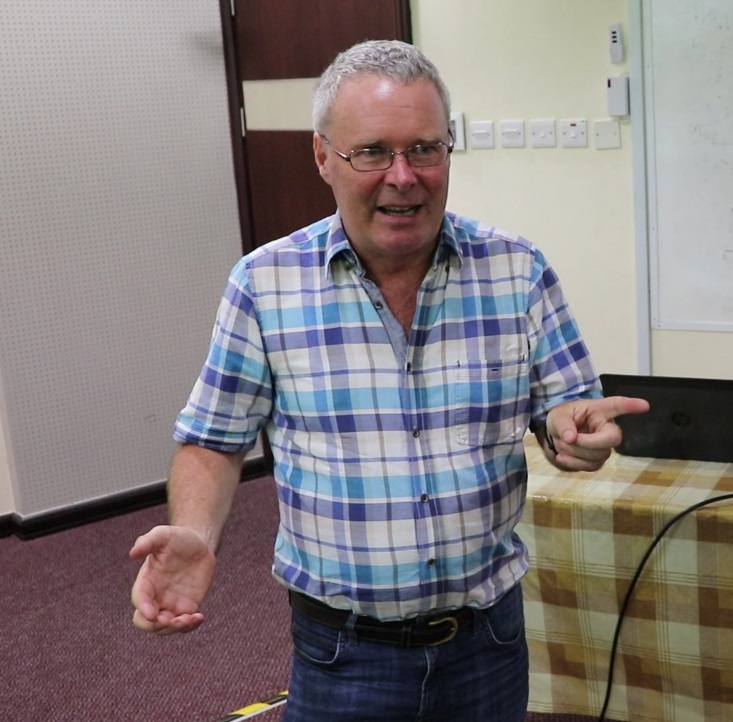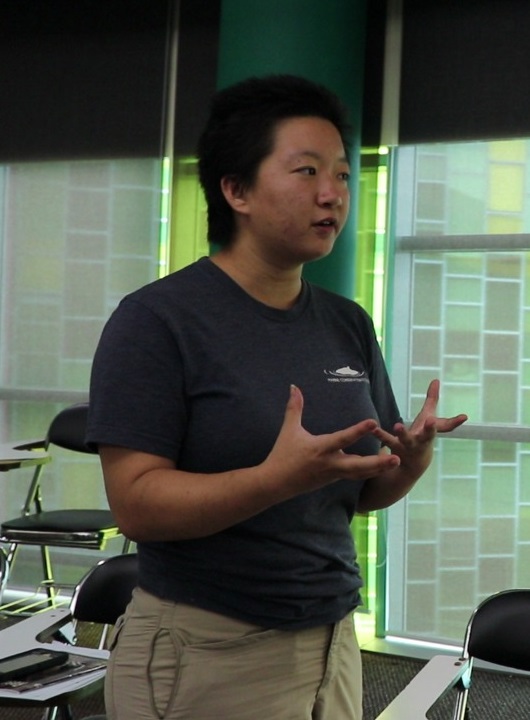Professor David Wardle from Nanyang Technological University (Singapore) presented a research talk as part of IBER Seminar Series for 2019. His presentation entitled ‘Linkages between vegetation change, consumers and carbon dynamics: insights from island ecosystems’ covered the long-term work that he and his team have been carrying out over the past 24 years involving a group of 30 islands in northern Sweden. The abstract of his seminar is available here.
Also present at the seminar was Dr Alex Cobb from Singapore-MIT Alliance for Research and Technology and Ms. Suzanne Ou, a PhD candidate from Stanford University (USA). Prof Wardle, Dr Cobb and Suzanne are part of the collaborative project “Diversity and distribution of soil microbial and invertebrate communities in tropical freshwater swamp, peat swamp and heath forests” along with Dr. René Dommain from University of Potsdam (Germany) and the UBD research team: Dr Rahayu Sukmaria Sukri, Dr Faizah Hj Metali, Dr Hussein Taha, and Mr Rodzay Hj Abd Wahab.

Prof Wardle on why they are working on the peat swamps in Brunei:
"My area of research is aboveground-belowground linkages - how plants and animals aboveground influence what we see in the soil, e.g. decomposers, as well as other organisms that are associated with plant roots and how these in turn influence what we see aboveground in terms of plants and animals present. Most of our works on “old soils” has been in the temperate region - we look at when soil gets really old in terms of the nutrients, as well as the plant and animal communities. There are very little studies coming out from here in the tropics. We think that the peat swamps in Western Brunei provide a really good opportunity to look at that because some of these peat lands have been formed over the last several thousand years - very deep, very slow decomposition processes and how that compares with systems that do not form peat, like for example the Kerangas forests that you have in the vicinity."

Suzanne Ou also briefly explained the general outline of
her upcoming project in Brunei:
"It is my first time here in Brunei, we got to go to the field and see all these different ecosystems, which is a great experience so far, especially the pristine peat swamp. I am currently studying the role of fungi and how it affects the community assembly of belowground soil microbes i.e. bacteria and different fungi, and how that affects above ground tree distribution. The things that I work on are called mycorrhizal fungi. They are these fungi that form mutualistic interaction with tree roots. Most tropical trees have arbuscular mycorrhizae so these fungi grow into tree roots itself but what’s unique to Southeast Asia are these dipterocarps which forms ectomycorrhizal associations; these kind of mycorrhizae grow between the root themselves rather than inside. This is especially common in peat swamps where trees grow in these waterlogged conditions and anoxic soils. This is definitely a perfect set up to study how mycorrhizae interacts with plant where you can do nowhere else and I’m planning to be back in the field in January 2020."
Text by: Roshanizah Rosli & Salwa Khalid

